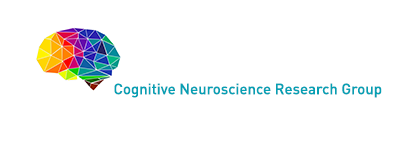The Cognitive Neuroscience Research Unit of CBMR unit provides support for research on language, learning & memory, and affective cognition in adults and children, using cognitive-behavioral and neuroscientific approaches. The facilities of the Cognitive Neuroscience Research Unit are open for utilization by Portuguese and international researchers that want to conduct collaborative research at the Universidade do Algarve. The Core Facilities of the Unit include state-of-the-art Electroencephalography (EEG) and Eye-Tracker laboratories as well as both hardware and software support for cognitive-behavioral research.
The CBMR Cognitive Neuroscience Research Unit facilities are constituted by an Electroencephalography laboratory (EEG lab) and an Eye-tracker laboratory (ET lab) and also provides several equipment for behavioral studies, allowing precise measurement of response times to visual and auditory stimuli.
The CBMR Cognitive Neuroscience Research Unit has a sound-proof boot that allows both behavioural and EEG data collection. It is also available several push button response boxes, headsets, voice key response box, among others. Some standard software packages are available, such as Presentation and Matlab. Neuropsychological tests are also available (e.g., WAIS III, WISC III, WMS III, Purdue Pegboard, PPVT 4, CPM-P)
Head of the Unit: Karl Magnus Petersson (kmpetersson@ualg.pt)
Core Facilities
The eye-tracking lab is equipped with SMI technology (www.smivision.com), including a stationary eye-tracking system, which is permanently mounted in the eye-tracking lab, and a remote, mobile system, which can be used outside the lab or for studies with children.
The stationary eye-tracking system (SMI Hi-speed 1250) includes a tower-mounted eye-tracker, a desktop computer and a monitor. The system performs data recording, stimulus presentation and data analysis. It is a video-based, dark-pupil system that allows binocular recordings at 500 Hz and monocular recordings up to 1250 Hz. Head movements are minimized by an integrated head-chin support system.
The remote system (SMI RED 500) is contact-free and requires the test participant to sit or stand still. The system includes an eye-tracking module, a monitor and a laptop. Stimuli may be presented at the monitor (monitor integrated mode) or a confined area (stand alone mode), such as a TV set, a poster, or a projection. Recording is binocular at 500 Hz. For both systems, numerical gaze data may be exported in txt-format.
EEG Lab
The EEG lab is composed of an observation room for the experiment leader and a room for subject measurements. The experimenter can observe the subject through a glass window. Each room is equipped with a computer and a monitor. The computer for EEG data acquisition (located in the observation room) records the EEG-signals using the ActiveView software. The stimulus presentation computer (located inside the subject room) controls stimulus presentation using the Presentation software.
The EEG lab is equipped with ActiveTwo Biosemi EEG measurement systems (www.biosemi.com) for both 32 and 64 individually amplified channel-setups. For both systems different cap sizes are available (suitable for children and adults). Each system is equipped with its own active AD-box, battery facilities and USB receiver.
In addition to the 32 and 64 channels setups it is possible to simultaneously measure several additional channels in parallel, including: EMG, skin surface temperature, respiration pattern, heart rate, galvanic skin response and tissue blood volume changes with plethysmography sensors.
Both comments and pings are currently closed.

